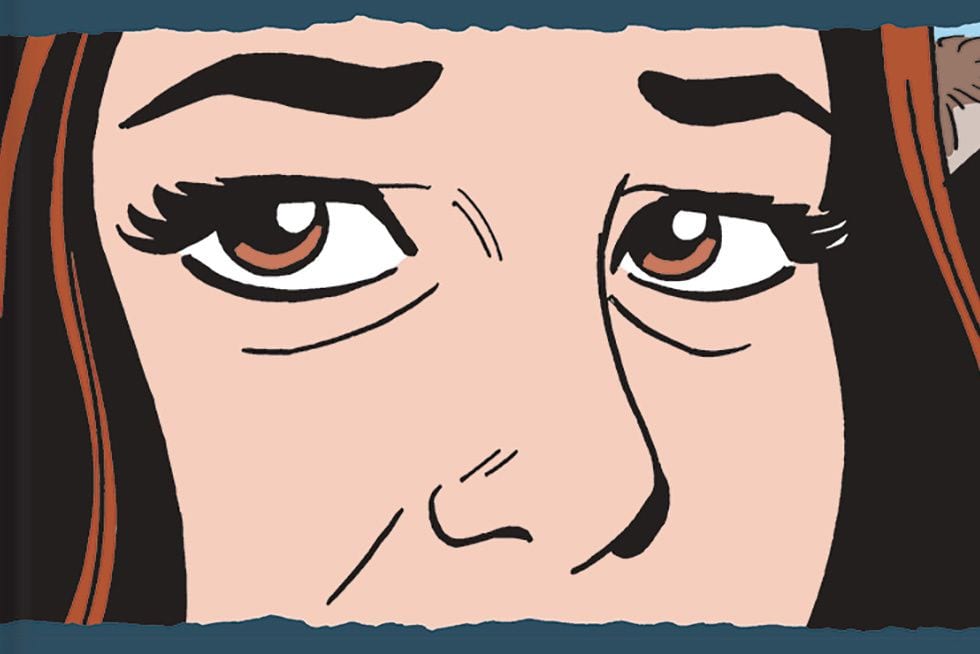
There are few comics series, or series in general, that hold up as well over a 40+ year run as the Hernandez Bros.’ Love and Rockets. A series filled with wide-ranging stories across time periods and adventures in space, those focused on life at home have always stood out. Their friendship, romantic relationship, the local punk scene they’re a part of, and the family and friends surrounding them offer a rich story filled with characters who’ve grown (and some who haven’t) over the years, with many shifts in their personal dynamics.
Is This How You See Me? centers on a reunion of sorts that begins with Maggie and Hopey leaving their current relationships behind to travel together and meet up with old friends. Following up on the last Locas series, The Love Bunglers, Maggie and Hopey are older and experiencing many of the life shifts that occur with age. But for all the natural, to-be-expected changes, such as Hopey’s casually tossed off mention of menopause, and the adult relationships they’re currently in, Maggie and Hopey still manage to fall back into familiar dynamics when together.
When Maggie awkwardly attempts to seduce Hopey at the beginning of their trip, Hopey’s obvious discomfort and Maggie’s embarrassment hangs over much of the story. The push and pull of their relationship has consistently been an important component in not only the ways they interact, but it’s also instrumental in fueling growth, however painful it may seem at the time. What’s never in doubt is that this current awkwardness ultimately won’t come between them. Whether they’re struggling in the present-day or remembering past events, the two always find their way back to one another. Even as Daffy amusingly points out that they’re “always falling out”, their history is too big and too entwined to truly part ways.
The flashbacks interspersed throughout the reunion story highlight Hernandez’s storytelling gifts wonderfully. As they individually and collectively reminisce about the old punk house where they used to hang out, their memories are colored by their youth, filled with possibilities. Even though in reality they were surrounded by drug dealers, criminals, and other unsavory characters, they seemed almost blissfully unaware of the danger and the inherent sadness of the many who passed through their lives at the time. It’s a clever and effective tool that not only contrasts the past and present physically in showing young versions of the characters, but also in terms of the ways the plans made in the past collide with the reality of the present.
Along with the emotional stakes of the story, Hernandez still manages to include the humor so integral to the series. It’s employed at just the right times to ensure that things aren’t weighed down too heavily by the difficulties and tragic circumstances that are also central to the story. In balancing so deftly the many layers of the story, Hernandez adds depth and truth to these beloved characters.
In fact, Hernandez’s affection for these characters is always in evidence. The art of the Love and Rockets series is praised for its style and beauty, but it’s perhaps the Locas characters who exhibit that care and attention most beautifully. Even as they’ve aged (Maggie has gained weight and Hopey now wears glasses), they remain the same vital and charismatic characters they’ve unfailingly been. Much of that is owed to Hernandez’s art, which showcases their humanity and loveliness always.
As the reunion moves closer to the concert featuring the local punk bands of their youth, Maggie and Hopey interact with old friends, bandmates, and others from their old scene, the dynamics of the past continue to dictate the dynamics of the present. It’s in Hernandez’s connection to the history of these characters that they’ve become so fully realized. Because of this shared history the past informs the future, remaining as essential in the now as it was in the then.
Above all, Love and Rockets, and all the various incarnations that world has inhabited over the years, has created a community of misfits filled with as much anger as warmth, with as many mistakes as wisdom, and with as much sadness as joy. That full spectrum is embodied most beautifully in Maggie and Hopey, and Is This How You See Me? reinforces it perfectly.

